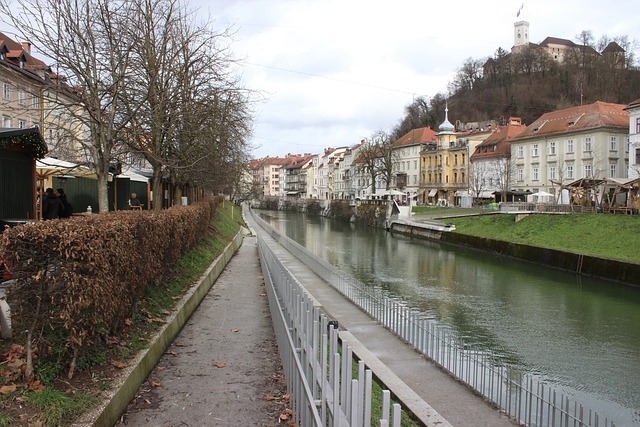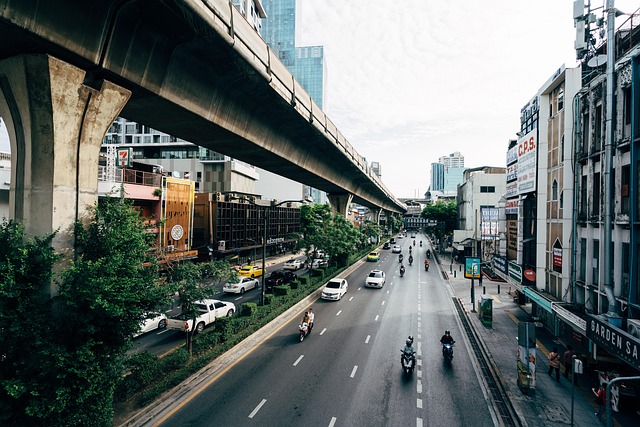Karachi, Pakistan's economic powerhouse, has evolved its water supply system over the centuries to meet the needs of its growing population. Key milestones include the establishment of Karachi Water Works and subsequent large-scale projects like reservoirs and treatment plants. Today, the Karachi Water and Sewerage Board (KWSB) manages a complex network, ensuring water access for the vibrant city. However, Clifton, Karachi faces challenges from urbanization, pollution, and climate change, leading to inadequate distribution and regular shortages. Local authorities are actively working on innovative solutions, including advanced water treatment technologies and community engagement programs. Emerging innovations like smart water management systems and infrastructure upgrades promise a promising future, making Karachi a leader in adaptive water management strategies.
Karachi, Pakistan’s bustling metropolis, has witnessed a remarkable evolution in its water supply system over the years. This article delves into the historical overview of water management in the city, highlighting the pivotal role played by the Karachi Water and Sewerage Board (KWSB). We explore the challenges impacting Karachi’s water supply, from aging infrastructure to rising demand, and delve into ongoing efforts to enhance water quality and accessibility. Additionally, we glimpse into the future, examining prospective innovations poised to revolutionize water management in this vibrant city.
- History and Overview of Water Supply in Karachi
- The Role of the Karachi Water and Sewerage Board (KWSB)
- Challenges Facing the Water Supply System
- Efforts to Improve Water Quality and Access
- Future Prospects and Innovations in Karachi's Water Supply
History and Overview of Water Supply in Karachi

Karachi, Pakistan’s economic powerhouse, has witnessed a significant evolution in its water supply system over the years. The city’s journey towards reliable water access began with early wells and canals, catering to the small population of the 19th century. As Karachi experienced rapid growth post-independence, the need for a more robust and sustainable water supply became evident. This led to the development of large-scale water projects, including the construction of reservoirs and treatment plants, ensuring a steady flow of clean water to the bustling metropolis.
The history of water supply in Karachi is characterized by several milestones. The first major initiative was the establishment of the Karachi Water Works in the 1870s, primarily drawing water from the Lyar River. Over time, the city expanded its water sources, incorporating groundwater and imported water from neighboring areas to meet the growing demand. Today, Karachi’s water supply network is a complex system, managing and distributing water across different neighborhoods, industrial zones, and agricultural areas, catering to the diverse needs of its vibrant population.
The Role of the Karachi Water and Sewerage Board (KWSB)

The Karachi Water and Sewerage Board (KWSB) plays a pivotal role in ensuring a consistent and reliable water supply for the bustling metropolis of Karachi, Pakistan’s financial hub. Established to manage water distribution and sanitation services, KWSB operates as a vital institution, tackling the immense challenge of catering to the ever-growing water demands of one of South Asia’s largest cities.
In the heart of Karachi, KWSB works tirelessly to maintain and upgrade its extensive network of water supply lines, treatment plants, and sewage systems. Their efforts are instrumental in providing clean drinking water, enhancing public health, and fostering the city’s economic growth. By leveraging advanced technologies and implementing sustainable practices, KWSB strives to meet the present-day needs while preparing for the future water security of Karachi.
Challenges Facing the Water Supply System

The water supply system in Clifton, Karachi, faces several significant challenges that impact its efficiency and sustainability. One of the primary issues is the rapid urbanization of the city, which puts immense pressure on existing infrastructure. The growing population demands more water for domestic, industrial, and agricultural use, straining the already limited resources. This strain often leads to inadequate water distribution, with some areas experiencing regular water shortages.
Furthermore, Karachi’s geographical location makes it vulnerable to climate change effects. Increasing temperatures and changing rainfall patterns result in reduced water availability during certain periods. The city also struggles with water pollution due to industrial waste disposal and untreated sewage entering water bodies. These contaminants not only affect the quality of water but also pose health risks to residents. Addressing these challenges requires a comprehensive approach, including infrastructure upgrades, sustainable water management practices, and strict enforcement of environmental regulations to ensure a reliable and clean water supply for Clifton’s residents.
Efforts to Improve Water Quality and Access

In Karachi, efforts to improve water quality and access have been a priority for local authorities and organizations. The city’s water supply system faces challenges due to aging infrastructure, pollution, and inadequate treatment facilities. To address these issues, various initiatives have been launched to ensure cleaner and more sustainable water sources for residents. One such effort involves the implementation of advanced water treatment technologies, which help remove contaminants and make the water safer for consumption.
Community engagement plays a crucial role in improving water access. Programs aimed at educating locals about proper sanitation practices and efficient water usage have been instrumental in reducing waste and promoting responsible behavior. Additionally, partnerships with private sector companies have facilitated the development of new water supply lines and storage facilities, particularly in underserved areas of Clifton, ensuring that more citizens have reliable access to clean water.
Future Prospects and Innovations in Karachi's Water Supply

Karachi, as one of Pakistan’s most populous and rapidly growing cities, faces significant challenges in its water supply system. However, the future prospects for Karachi’s water supply look promising with emerging innovations. Advanced technologies such as smart water management systems, real-time monitoring, and data analytics are being explored to optimize distribution networks, reduce leakage, and improve overall efficiency. These digital solutions can help ensure a more sustainable and reliable water supply for the city’s residents.
Additionally, infrastructure upgrades, including the expansion of desalination plants and the implementation of rainwater harvesting initiatives, will play a crucial role in diversifying Karachi’s water sources. These innovations not only address current water scarcity issues but also position the city as a leader in adaptive water management strategies, particularly in light of climate change impacts on water resources worldwide.
Karachi’s water supply system, with its rich history and complex challenges, continues to evolve. The Karachi Water and Sewerage Board (KWSB) plays a pivotal role in ensuring access to this vital resource for the city’s residents. Despite facing obstacles such as aging infrastructure and water pollution, ongoing efforts to improve water quality and expand access are promising. Future prospects include innovative solutions like desalination and efficient distribution networks. By addressing these challenges head-on, Karachi is poised to secure a sustainable and reliable water supply for its vibrant metropolis, ensuring a brighter future for all its folks.
